Dacia Spring vs Mazda MX-30 – Which one offers the better deal?
Both models have their strengths – but which one suits you more?
Compare performance, efficiency, price and space directly: Dacia Spring or Mazda MX-30?
Costs and Efficiency:
Looking at overall running costs, both models reveal some interesting differences in everyday economy.
Dacia Spring has a convincingly advantage in terms of price – it starts at 14500 £, while the Mazda MX-30 costs 30800 £. That’s a price difference of around 16363 £.
In terms of energy consumption, the advantage goes to the Dacia Spring: with 13.20 kWh per 100 km, it’s noticeable more efficient than the Mazda MX-30 with 18.30 kWh. That’s a difference of about 5.10 kWh.
As for range, the Dacia Spring performs significantly better – achieving up to 228 km, about 143 km more than the Mazda MX-30.
Engine and Performance:
Power, torque and acceleration say a lot about how a car feels on the road. This is where you see which model delivers more driving dynamics.
When it comes to engine power, the Mazda MX-30 has a convincingly edge – offering 170 HP compared to 65 HP. That’s roughly 105 HP more horsepower.
In acceleration from 0 to 100 km/h, the Mazda MX-30 is clearly quicker – completing the sprint in 9.10 s, while the Dacia Spring takes 13.70 s. That’s about 4.60 s faster.
In terms of top speed, the Mazda MX-30 performs somewhat better – reaching 140 km/h, while the Dacia Spring tops out at 125 km/h. The difference is around 15 km/h.
Space and Everyday Use:
Cabin size, boot volume and payload all play a role in everyday practicality. Here, comfort and flexibility make the difference.
Seats: Mazda MX-30 offers to a small extent more seating capacity – 5 vs 4.
In curb weight, Dacia Spring is convincingly lighter – 1013 kg compared to 1849 kg. The difference is around 836 kg.
In terms of boot space, the Mazda MX-30 offers somewhat more room – 350 L compared to 308 L. That’s a difference of about 42 L.
In maximum load capacity, the Mazda MX-30 performs a bit better – up to 1155 L, which is about 151 L more than the Dacia Spring.
When it comes to payload, Mazda MX-30 distinct takes the win – 402 kg compared to 302 kg. That’s a difference of about 100 kg.
Who comes out on top?
Overall, the Dacia Spring shows itself to be offers a more balanced package and secures the title of DriveDuel Champion.
It convinces with the more balanced overall package and proves to be the more versatile choice for everyday use.
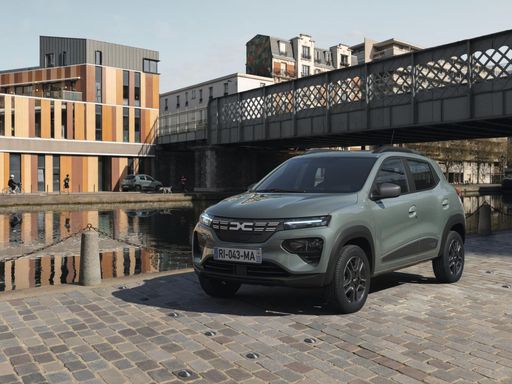 @ dacia-presse.de
@ dacia-presse.de
Dacia Spring
Dacia Spring
The Dacia Spring stands out as an affordable and environmentally friendly option in the electric vehicle market, combining practicality with a compact design ideal for urban settings. Its minimalist interior, while basic, provides all the essential features needed for a comfortable drive, reflecting its cost-effective approach. The vehicle's performance suits city driving, making it an appealing choice for those seeking an entry-level electric car.
details @ dacia-presse.de
@ dacia-presse.de
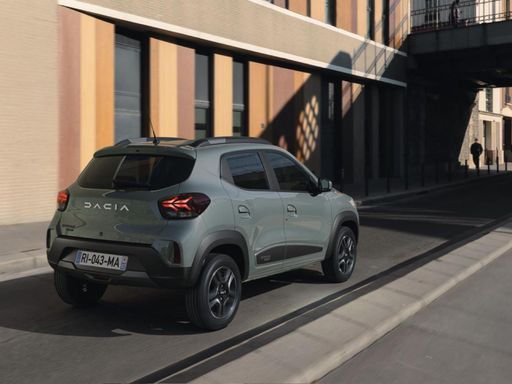 @ dacia-presse.de
@ dacia-presse.de
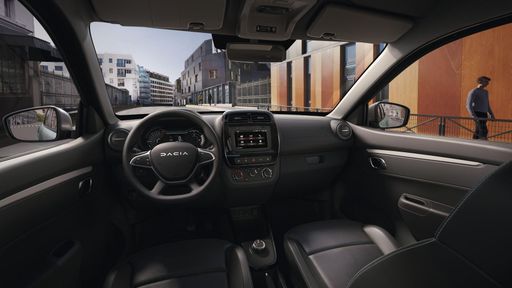 @ dacia-presse.de
@ dacia-presse.de
Mazda MX-30
The Mazda MX-30 is a compact crossover that combines unique design with an environmentally conscious approach. Its distinct exterior features a coupe-like silhouette and freestyle doors that offer practicality and style. Inside, the cabin boasts sustainable materials, creating a harmonious blend of modern aesthetics and eco-friendly innovation.
details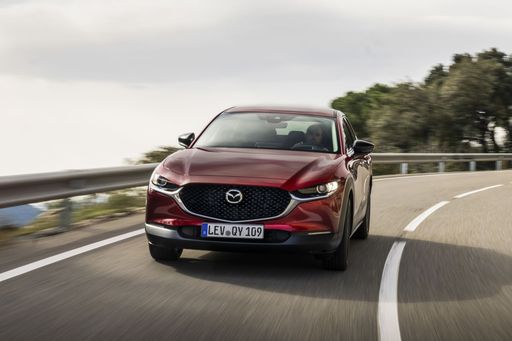 @ de.mazda-press.com
@ de.mazda-press.com
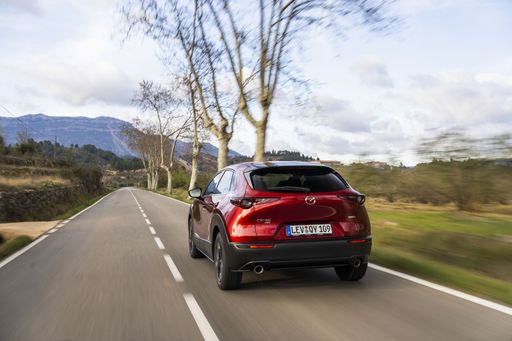 @ de.mazda-press.com
@ de.mazda-press.com
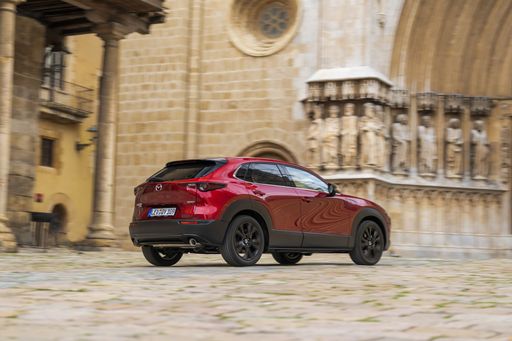 @ de.mazda-press.com
@ de.mazda-press.com
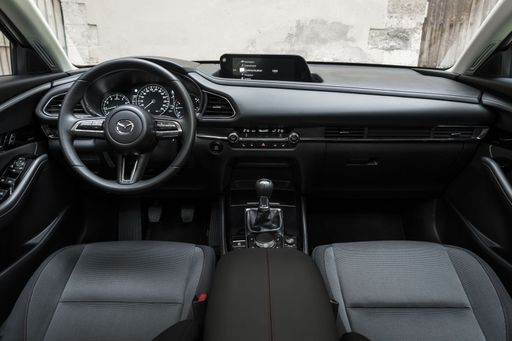 @ de.mazda-press.com
@ de.mazda-press.com
 @ dacia-presse.de
@ dacia-presse.de
|
 @ de.mazda-press.com
@ de.mazda-press.com
|
|
|
|
Costs and Consumption |
|
|---|---|
|
Price
14500 - 17100 £
|
Price
30800 - 37100 £
|
|
Consumption L/100km
-
|
Consumption L/100km
-
|
|
Consumption kWh/100km
13.2 - 14.1 kWh
|
Consumption kWh/100km
18.30 kWh
|
|
Electric Range
225 - 228 km
|
Electric Range
85 km
|
|
Battery Capacity
26.80 kWh
|
Battery Capacity
-
|
|
co2
0 g/km
|
co2
22 g/km
|
|
Fuel tank capacity
-
|
Fuel tank capacity
-
|
Dimensions and Body |
|
|---|---|
|
Body Type
SUV
|
Body Type
SUV
|
|
Seats
4
|
Seats
5
|
|
Doors
5
|
Doors
5
|
|
Curb weight
1013 - 1050 kg
|
Curb weight
1849 kg
|
|
Trunk capacity
308 L
|
Trunk capacity
332 - 350 L
|
|
Length
3701 mm
|
Length
4395 mm
|
|
Width
1583 mm
|
Width
1848 mm
|
|
Height
1519 mm
|
Height
1555 mm
|
|
Max trunk capacity
1004 L
|
Max trunk capacity
1137 - 1155 L
|
|
Payload
265 - 302 kg
|
Payload
402 kg
|
Engine and Performance |
|
|---|---|
|
Engine Type
Electric
|
Engine Type
Plugin Hybrid
|
|
Transmission
Automatic
|
Transmission
Automatic
|
|
Transmission Detail
Reduction Gearbox
|
Transmission Detail
Reduction Gearbox
|
|
Drive Type
Front-Wheel Drive
|
Drive Type
Front-Wheel Drive
|
|
Power HP
44 - 65 HP
|
Power HP
170 HP
|
|
Acceleration 0-100km/h
13.7 - 19.1 s
|
Acceleration 0-100km/h
9.10 s
|
|
Max Speed
125 km/h
|
Max Speed
140 km/h
|
|
Torque
113 - 125 Nm
|
Torque
-
|
|
Number of Cylinders
-
|
Number of Cylinders
-
|
|
Power kW
33 - 48 kW
|
Power kW
125 kW
|
|
Engine capacity
-
|
Engine capacity
830 cm3
|
General |
|
|---|---|
|
Model Year
2024
|
Model Year
2025
|
|
CO2 Efficiency Class
A
|
CO2 Efficiency Class
B
|
|
Brand
Dacia
|
Brand
Mazda
|
What drive types are available for the Dacia Spring?
The Dacia Spring is available as Front-Wheel Drive.
The prices and data displayed are estimates based on German list prices and may vary by country. This information is not legally binding.
